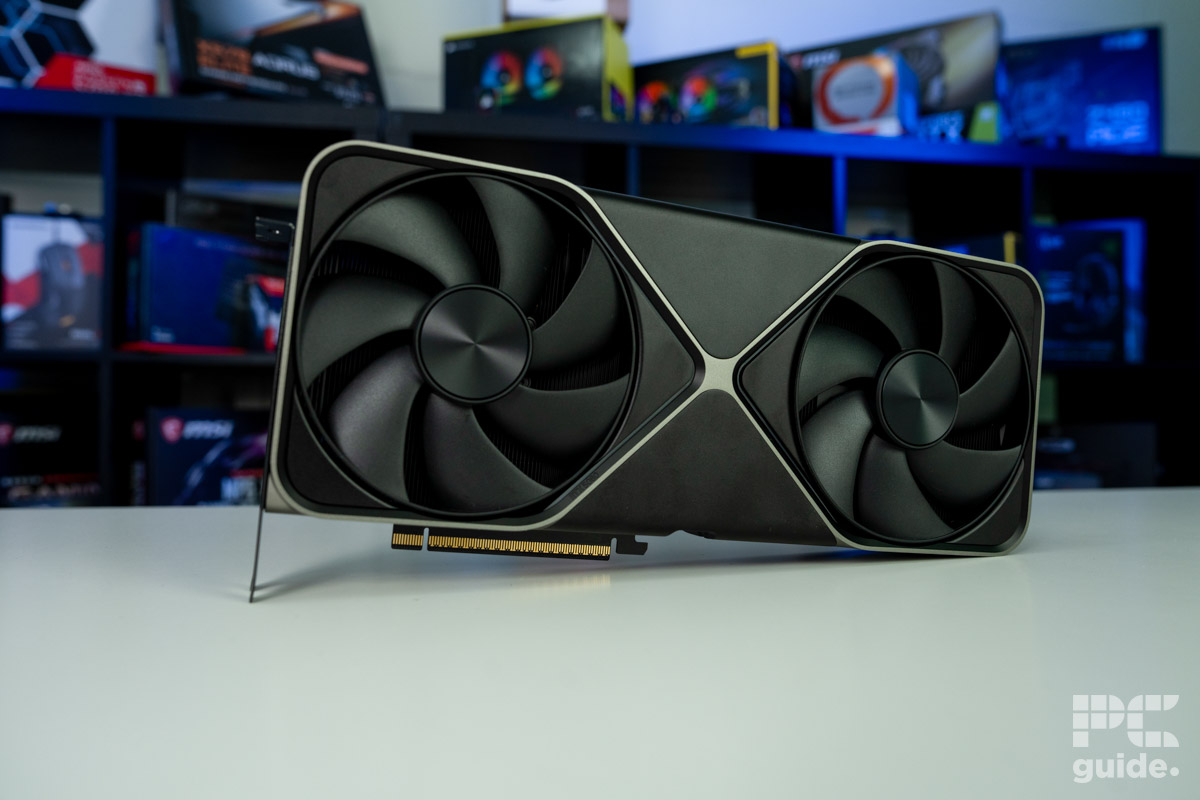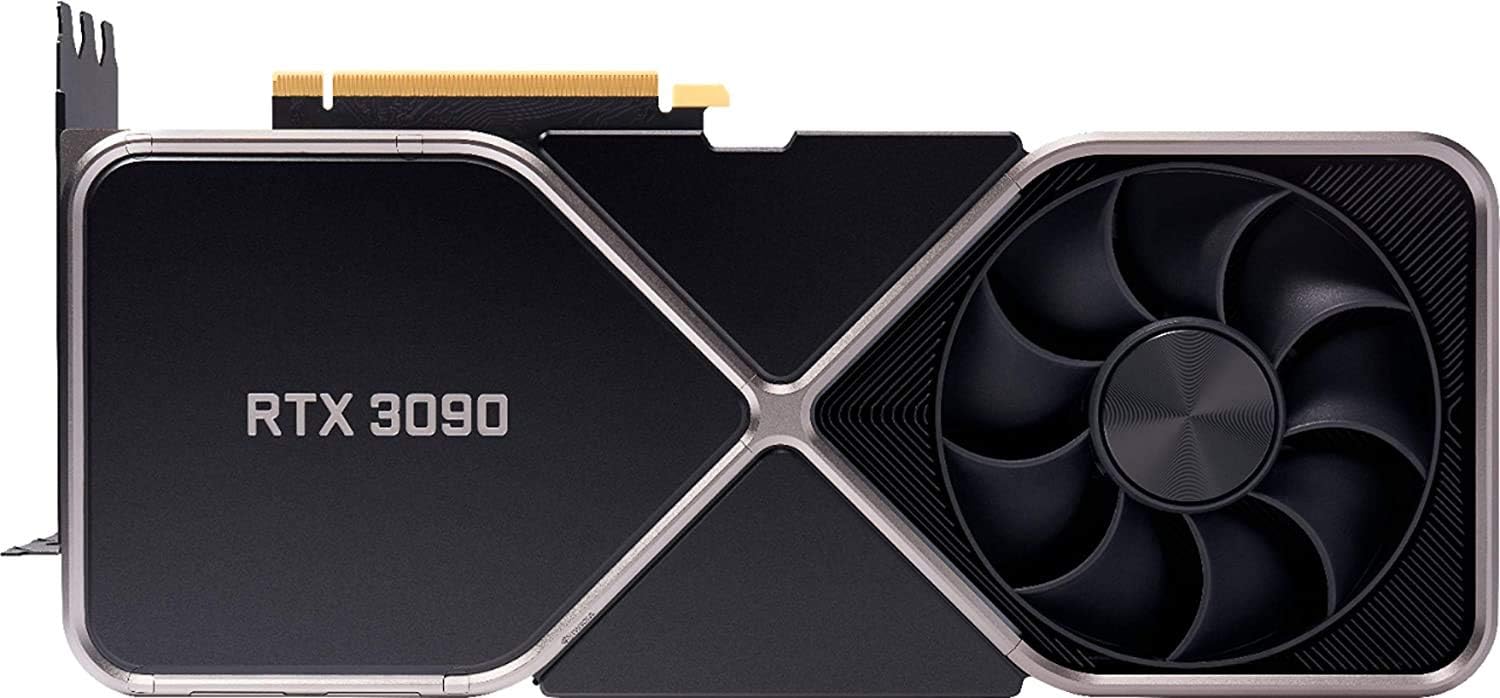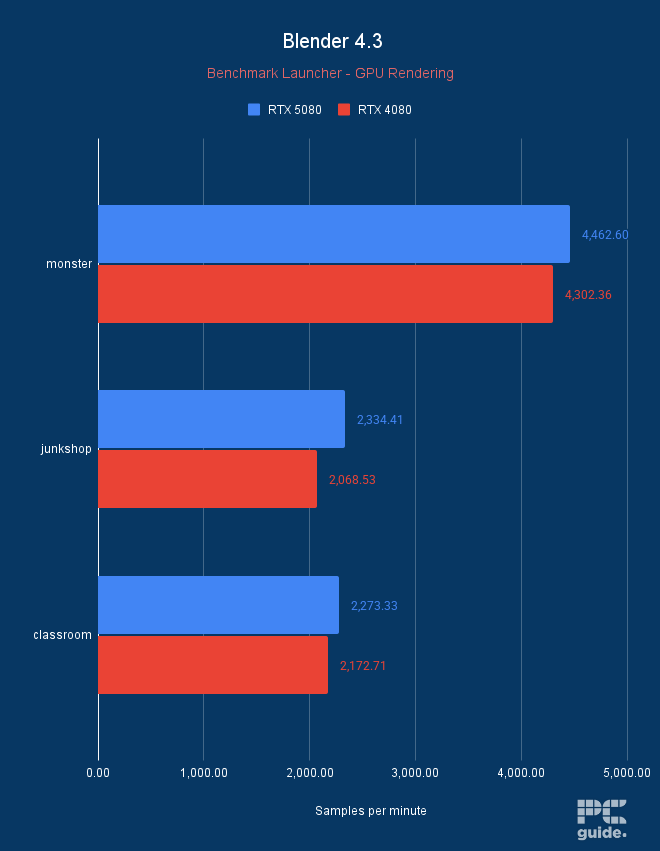RTX 5080 vs RTX 3090 specs and performance comparison – how do they compare?
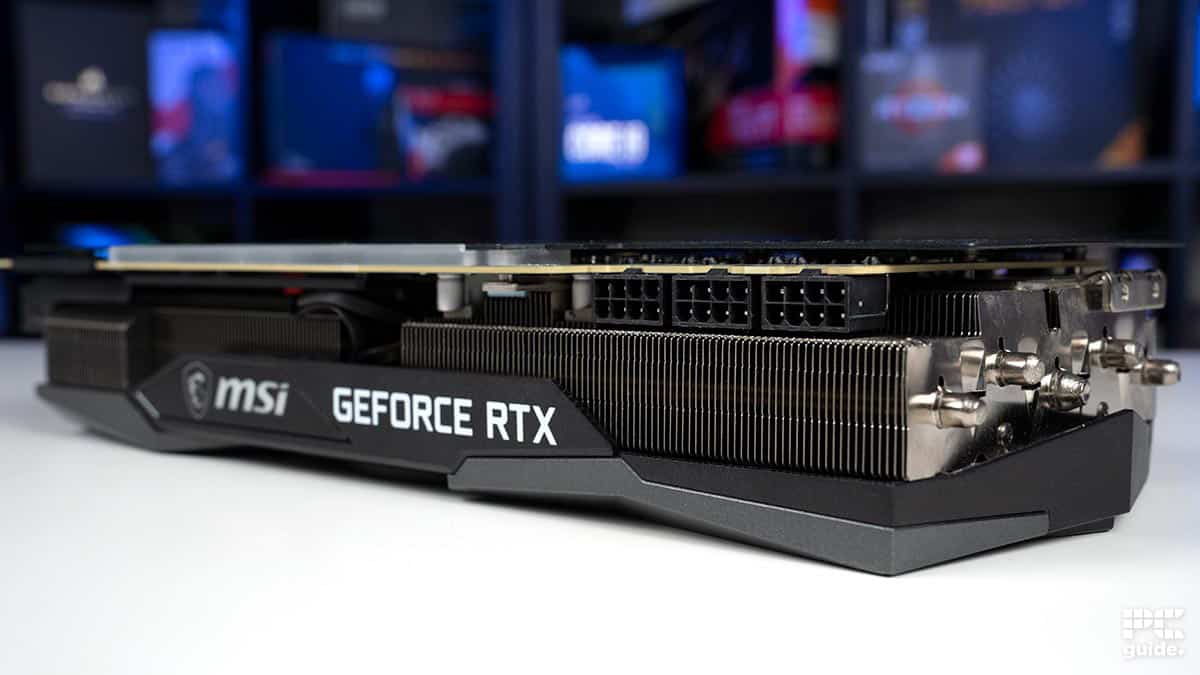
Table of Contents
The RTX 5080 has seriously impressed us when it comes to performance and bang for your buck, for that matter, when we reviewed it. The big question is, just how much of a gulf is there between the new 50-series card and Nvidia’s impressive 30-series option – the RTX 3090?
We’ve reviewed the 3090, so we have some solid data to do a comparison on more than just surface-level specs. Here, we’ll explore differences in pricing, sizing, specs, and performance so you can make an informed decision between the two.
Prime Day is finally here! Find all the biggest tech and PC deals below.
- Sapphire 11348-03-20G Pulse AMD Radeon™ RX 9070 XT Was $779 Now $739
- AMD Ryzen 7 7800X3D 8-Core, 16-Thread Desktop Processor Was $449 Now $341
- ASUS RTX™ 5060 OC Edition Graphics Card Was $379 Now $339
- LG 77-Inch Class OLED evo AI 4K C5 Series Smart TV Was $3,696 Now $2,796
- Intel® Core™ i7-14700K New Gaming Desktop Was $320.99 Now $274
- Lexar 2TB NM1090 w/HeatSink SSD PCIe Gen5x4 NVMe M.2 Was $281.97 Now $214.98
- Apple Watch Series 10 GPS + Cellular 42mm case Smartwatch Was $499.99 Now $379.99
- ASUS ROG Strix G16 (2025) 16" FHD, RTX 5060 gaming laptop Was $1,499.99 Now $1,274.99
- Apple iPad mini (A17 Pro): Apple Intelligence Was $499.99 Now $379.99
*Prices and savings subject to change. Click through to get the current prices.
Let’s take a closer look at how these two stack up against each other.
RTX 5080 vs. 3090 spec comparison
| Specifications | RTX 5080 | RTX 3090 |
|---|---|---|
| Generation | Blackwell | Ampere |
| Cores | 10,752 | 10,496 |
| Base clock speed | 2.30 GHz | 1.40 GHz |
| Boost clock speed | 2.62 GHz | 1.70 GHz |
| Memory | 16GB GDDR7 | 24GB GDDR6X |
| Memory interface | 256-bit | 384-bit |
| Memory clock | 30 Gbps | 19.5G Gbps |
| Bandwidth | 960.0 GB/s | 930GB/s |
| TDP | 360W | 350W |
| Power connector | 12V-2×6 | 1×12-pin/3x 8-pin |
| Measurements | 304 mm x 137 mm x 40 mm | 313 mm x 138 mm x 55 mm |
| Release date | Jan 2025 | Sep 2020 |
By name, the two cards are not on the same tier; the RTX 5080 sits one step (unless you include Ti/Super in some generations) below the 3090. But with the benefit of two generational improvements, that should bring some upgrades and performance improvements. So, comparing and going over the specs, we look at how much has changed and improved.
Generation and process
Firstly, there are two generations between these GPUs. Ampere came out in 2020 and fundamentally differs from Blackwell, which came out in 2025. It used a different foundry to create the die inside, making up the GA102 processor. With Samsung creating it, the RTX 3090 features an 8nm process size, leading to 28.3 billion transistors on the 628mm² die size.
In comparison, the RTX 50 series utilizes TSMCs 4nm process. This means the 5080’s GB203 processor has a 45.6 billion transit count even though it has a die size of 378mm². With this much-improved density, the 5080 can get a lot more transistors, and so the components that do the work in a smaller space make it a lot more efficient in its space and, therefore, the power it has in processing.
Another improvement from the two generations is utilizing different PCIe and IO versions. The 5080 adopts the PCIe 5.0 x16 interface, upgrading from the RTX 3090’s PCIe 4.0, doubling the throughput allowed from 31.5GB/s up to 63GB/s. It also upgrades to DisplayPort 2.1b from DP 1.4a, basically doubling the bandwidth from HBR3 8.10 Gbit/s per lane to UHBR 20 and 20Gbit/s per lane, meaning it is capable of doubling the refresh rate per resolution that can be transmitted.
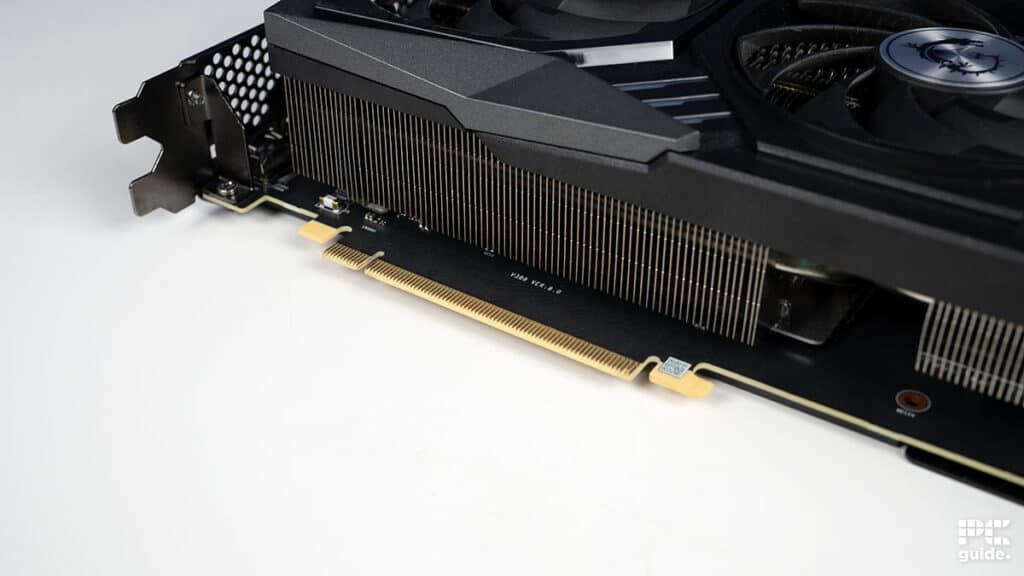
Cores and speeds
Nvidia graphics cards are built with CUDA cores at the forefront of processing computing tasks in parallel with each other. So, with those process improvements and fitting in more transistors on the smaller die, it’s unsurprising that the RTX 5080 is now offering a similar number of CUDA cores to the flagship from two generations ago.
The RTX 5080 is spaced out with 10,752 compared to the 10,496 on the RTX 3090. So, if they were of the same generation with similar speeds, this would lead to the 5080 jumping ahead in processing power, but there are many other factors to consider in its setup, too.
But these cores run at different speeds, too. The 5080 is set at 2.3GHz as the base clock compared to the 3090s at 1.4GHz. It also boosts the cores as it reaches 2.62GHz compared to the 1.7GHz of the 3090, even without the overclocking of the custom cards. But even without the latest card, it can get much higher frequencies, leading to faster graphics processing in the cores.
Memory
There is a variance in the VRAM onboard the two cards as well. The RTX 5080 has been upgraded to the GDDR7 spec, which increases the speed up to 32Gbps per pin compared to the 24Gbps of the GDDR6X on the RTX 3090. This means that even though it has a lower bus width (256-bit vs. 384-bit), it still manages to reach 960GB/s compared to 936GB/s thanks to the 30Gbps clock that’s over 10Gbps faster than the RTX 3090.
The 5080 does have a lower memory capacity, though. With a 16GB total compared to the 24GB found on the 3090, that’s an 8GB drop in comparison. So even if the speed may be similar, the lack in size might still limit its capabilities and not quite reach the 3090 in all it can do.
Gaming performance
The RTX 3090 was the flagship model of the 30-series lineup, and even though it was released years ago, it is still considered a solid card for 4K gaming. We tested it in several games and were surprised by how well it performed.
For the 3090, in Cyberpunk 2077, with the graphics maxed out and DLSS disabled, we were getting around 87 FPS at 1440p and 44 FPS at 4K, which is quite impressive. However, with RT enabled, the FPS dropped from 44 to 22. For Ray Tracing, you’ll need to use DLSS to boost the FPS.

On the other hand, in Avatar: Frontiers of Pandora, the RTX 3090 managed to deliver around 75 FPS at 1440p and 60 FPS at 4K. We then launched Assassin’s Creed Mirage, where the card didn’t disappoint, delivering close to 100 FPS at 1440p and 70 FPS at 4K. In CS2, which isn’t as resource-hungry, we were getting over 140 FPS at 4K, which increased to 265 FPS at 1440p.
As for the RTX 5080, we got some very impressive benchmarks, indeed, mostly with DLSS turned on.
For Cyberpunk 2077, without DLSS, we got 72fps at 4K. That’s a 63% increase over the RTX 3090. For 1440p, it achieved a whopping 155fps, which is 78% higher than the RTX 3090.

With ray-tracing on, it hit 35fps at 4K compared to 22fps for the 3090. An improvement for sure, but it goes without saying that switching DLSS on is the way to go to max this out.
Overall, DLSS performance impresses with the RTX 5080, and we’ve seen up to 183fps with 4K, Ray tracing, and multi-frame generation with Cyberpunk 2077, too. But that being said, to get a more accurate idea of how the cards match up against each other, we think it’s better to look at the pure rasterization benchmarks.
CS2 is always a good indicator of how these cards do with super high fps at lower resolution. The RTX 3090 achieved 1080p/ 318fps and 1440p/ 265fps. The RTX 5080 got 1080p/ 468fps and 1440p/ 346fps. That a 47% increase for 1080p, and a 30% increase for 1440p for the RTX 5080.
Clearly – the 5080 is the winner, but I’d say they still perform very well for the game. Overall, when it comes to performance, the RTX 3090 does well across the board at 1440p and 4K, but starts to struggle a little without DLSS switched on, especially when its using Ray Tracing. The RTX 5080 handles this much better, especially with DLSS and Multi-frame generation, making it a better choice for gaming.
Synthetic performance
In terms of rendering, we’ll do a quick glance at the differences, but it’ll be no surprise which one comes out on top. We’ll leave the details for our reviews and take one of the rendering benchmarks this time to indicate the key differences.
With Blender, the 5080 trounces the 3090 with all tests. Taking the monster test, you see an increase from 2592.8 to 4462.60, which is a 72% increase.
We did do some benchmarks for AI, however, since this is relatively new test for us, it’s difficult to compare against the RTX 3090 without further benchmarking. You can read our full review of the RTX 5080 for more detail here.
For rendering and creative work – there’s a clear increase in rendering power there, which will save you time and potential headaches! A no-brainer, in my opinion.
Sizing
The RTX 3090 is a huge card, as it measures 313 mm x 138 mm x 55 mm (LxWxH). With each generation, Nvidia has kept increasing the size of its cards, which is why many were expecting the RTX 5080 to be much bigger than the 4080 and 3090. However, according to the official specifications, the card measures only 304 mm x 137 mm x 40 mm.
With these dimensions, the RTX 5080 is not only smaller in length and width but also thinner than the 3090, thanks to its 2-slot design. This also means it takes up less space on the motherboard, allowing easy access to other PCIe slots.
Features
It’s not all about the core specs of the cards either, though, as plenty more things have changed with the features included in each generation. One is the supported NVENC generation, where Nvidia’s video encoding standard takes compute-intensive tasks from the CPU – now offering two 9th Gen options compared to the 7th Gen option on the 3090, allowing for improved encoding and decoding performance with the two 6th Gen NVDEC over the 5th Gen on the Ampere series.
It also furthers the generation of tensor and ray tracing cores by two generations, leading to further improvements in their performance. This is where the GPU’s AI TOPS (trillion operations per second) has also improved, rated for 1,801 of the 5080 compared to the 3090’s 285, boosting its capability in tasks like running an LLM locally.
But it also contributes to improving the DLSS integration in the generation. The 50 series now has exclusive access to DLSS 4, specifically the Multi Frame Generation capability or even frame gen compared to the 30 series, as shown by the table of features Nvidia highlighted below. It utilizes AI to generate up to three times more frames per rendered frame, giving it a boost in performance that might help create a high frame rate in hard-to-run resolutions and games.

Nvidia also showcased in a video how these DLSS generations differ. Also, it shows how these affect the performance and picture quality, which vary between the options. It also improves FPS and PC latency between DLSS off, 2, 3.5, and 4. The 3090 will only be able to utilize DLSS 2, as the 4080 will benefit from DLSS 4 instead, which means a variance of nearly 200 if it were on the same card.
The RTX 50 series will also be the first to benefit from Reflex 2 and its frame wrap technology. This further reduces the system latency and how long your inputs take to get input into your game – giving you the best chance for a competitive advantage.
This new tech will now have the CPU calculate the next frame based on the input you’ve already given. Predicting your next move and making sure you’re the first to shoot or make the first move. In their example, Nvidia shows The Finals starting with a 56ms latency, dropping to 27ms with Reflex 1, and then Reflex 2 further drops that to just 14ms.
Price comparison
Now, when it comes to price, there is some variation between the two cards. At launch, the RTX 5080 will have an MSRP of $999, which, compared to the 30 series 80 model, can be quite the shocker as in that generation, the 3080 came out for $699 if you found it for that much.
On the other hand, the RTX 3090 price is also on another level. Considering that it started with a $1,499 launch price, there is a $500 difference between the two GPUs, which is quite a significant consideration when choosing your budget and how they fit in. Although the 3090 is older now, it’s unlikely to hold up as well in price to performance, as I’m sure we’ll see in the benchmarks.
Verdict
Overall, it’s clear that the RTX 5080 is the way to go if you’re looking for a new GPU with superior 4K and 1440p performance, alongside impressive rendering speeds that leave the 3090 in the dust. That being said, the 3090 does do well with 4K and does do very well with 1440p, making it a good option for less graphically demanding games or less intensive usage.
Is the lower memory capacity of the RTX 5080 a disadvantage?
On paper, it seems like the RTX 5080 is at a disadvantage with its 16GB VRAM compared to the 3090’s 24GB VRAM, but it also has a faster and more efficient memory type, GDDR7. That being said, our comparison clearly indicates that the RTX 5080 is at no disadvantage whatsoever in gaming and synthetic workloads. However, there might be specific workflows that require or make better use of more VRAM, such as fine-tuning language learning models (LLMs), meaning the RTX 3090 might be the better card for that job.

